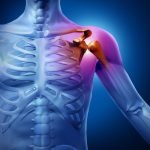New From of Diabetes – Malnutrition-Related
From Albert Einstein College of Medicine
A mysterious form of diabetes known as malnutrition-related diabetes afflicts tens of millions of people in Asian and sub-Saharan African countries. Its victims — mainly thin and impoverished adolescents and young adults — rarely live more than a year after diagnosis. Their young age and thinness suggest type 1 diabetes (T1D), but insulin injections usually don’t help and can even cause death from low blood sugar. Nor do patients seem to have type 2 diabetes (T2D), which is typically associated with obesity. The disease was first described nearly 70 years ago, yet lack of research into the condition means that doctors are still unsure how to treat it.
Key Step Towards a Treatment
For the past 12 years, Meredith Hawkins, M.D., M.S., founding director of Einstein’s Global Diabetes Institute, has spearheaded an international collaborative effort aimed at finding the underlying metabolic defects that lead to malnutrition-related diabetes — a crucial step towards finding effective treatments. In the first comprehensive study of individuals with this poorly understood disease, Dr. Hawkins and colleagues have shown that malnutrition-related diabetes is significantly different metabolically from T1D and T2D and should be considered a distinct type of diabetes. Their findings were published today in Diabetes Care.
“Current scientific literature offers no guidance on managing malnutrition-related diabetes, which is rare in high-income nations but exists in more than 60 low- and middle-income countries,” said Dr. Hawkins, professor of medicine and the Harold and Muriel Block Chair in Medicine at Einstein. “The doctors in those countries read Western medical journals, so they don’t learn about malnutrition-related diabetes and don’t suspect it in their patients. We hope our findings will increase awareness of this disease, which is so devastating to so many people, and will pave the way for effective treatment strategies.”
Investigating Insulin’s Role
The research was conducted at the Christian Medical College in Vellore, India, in collaboration with Dr. Hawkins and other members of the Global Diabetes Institute. Using state-of-the-art techniques for assessing insulin secretion and insulin action, the researchers performed in-depth metabolic evaluations on 20 males aged 19 to 45 identified as likely to have malnutrition-related diabetes. For comparison, groups of individuals with T1D, T2D, as well as healthy controls underwent the same metabolic tests. The study was limited to male participants to minimize sex-specific variability and because males account for about 85% of people who develop malnutrition-related diabetes.
“We used highly sophisticated techniques to rigorously and carefully study these individuals — and our conclusions differ from earlier clinical observations,” said Dr. Hawkins.
More specifically, earlier findings had suggested that malnutrition-related diabetes stemmed from insulin resistance. (The hormone insulin enables glucose in the blood to enter the body’s cells to be used for energy; in insulin resistance, glucose in the blood rises to toxic levels because cells no longer respond to a person’s own insulin.) “But it turns out,” said Dr. Hawkins, “that people with malnutrition-related diabetes have a very profound defect in insulin secretion, which wasn’t recognized before. This new finding totally revolutionizes how we think about this condition and how it should be treated.”
The good news, according to Dr. Hawkins, is that many new drugs have recently become available for treating T2D, some of which boost insulin secretion from the pancreas — raising the possibility of finding safe and effective ways of treating the condition.
“Diabetes has become a true global pandemic,” Dr. Hawkins noted. “One in 10 adults worldwide has the disease, and three-quarters of them — some 400 million people — live in low- and middle-income countries,” she said. “In those countries where it’s been studied, the prevalence of malnutrition-related diabetes among people with diabetes is about 20%, meaning that about 80 million people may be affected worldwide. For comparison, an estimated 38 million people are now living with HIV/AIDS. So we clearly need to learn a lot more about malnutrition-related diabetes and how best to treat it.”
1. Eric Lontchi-Yimagou, Riddhi Dasgupta, Shajith Anoop, Sylvia Kehlenbrink, Sudha Koppaka, Akankasha Goyal, Padmanaban Venkatesan, Roshan Livingstone, Kenny Ye, Aaron Chapla, Michelle Carey, Arun Jose, Grace Rebekah, Anneka Wickramanayake, Mini Joseph, Priyanka Mathias, Anjali Manavalan, Mathews Edatharayil Kurian, Mercy Inbakumari, Flory Christina, Daniel Stein, Nihal Thomas, Meredith Hawkins. An Atypical Form of Diabetes Among Individuals With Low BMI. Diabetes Care, 2022; 45 (6): 1428 DOI: 10.2337/dc21-1957









